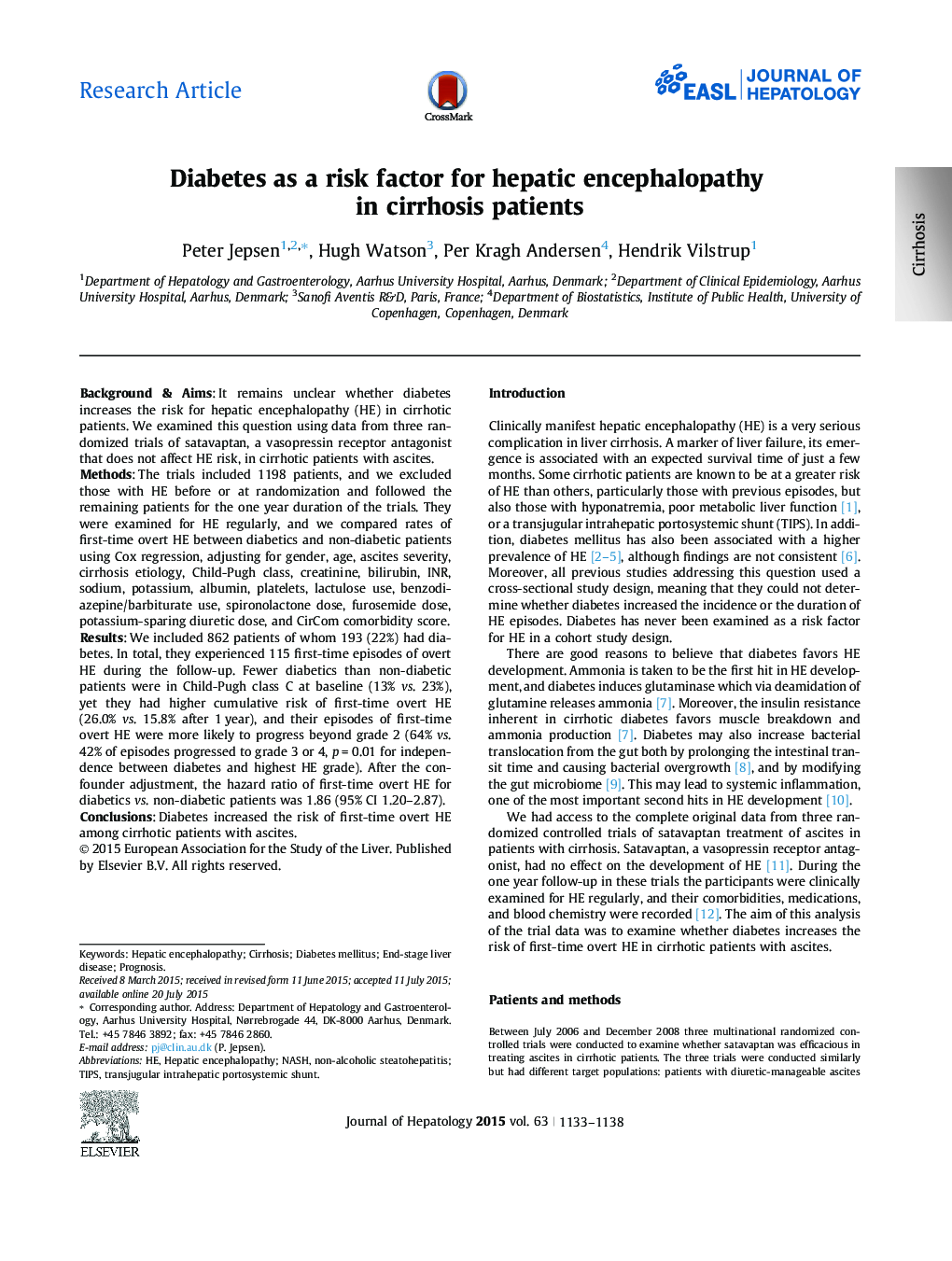| Article ID | Journal | Published Year | Pages | File Type |
|---|---|---|---|---|
| 6101307 | Journal of Hepatology | 2015 | 6 Pages |
Background & AimsIt remains unclear whether diabetes increases the risk for hepatic encephalopathy (HE) in cirrhotic patients. We examined this question using data from three randomized trials of satavaptan, a vasopressin receptor antagonist that does not affect HE risk, in cirrhotic patients with ascites.MethodsThe trials included 1198 patients, and we excluded those with HE before or at randomization and followed the remaining patients for the one year duration of the trials. They were examined for HE regularly, and we compared rates of first-time overt HE between diabetics and non-diabetic patients using Cox regression, adjusting for gender, age, ascites severity, cirrhosis etiology, Child-Pugh class, creatinine, bilirubin, INR, sodium, potassium, albumin, platelets, lactulose use, benzodiazepine/barbiturate use, spironolactone dose, furosemide dose, potassium-sparing diuretic dose, and CirCom comorbidity score.ResultsWe included 862 patients of whom 193 (22%) had diabetes. In total, they experienced 115 first-time episodes of overt HE during the follow-up. Fewer diabetics than non-diabetic patients were in Child-Pugh class C at baseline (13% vs. 23%), yet they had higher cumulative risk of first-time overt HE (26.0% vs. 15.8% after 1 year), and their episodes of first-time overt HE were more likely to progress beyond grade 2 (64% vs. 42% of episodes progressed to grade 3 or 4, p = 0.01 for independence between diabetes and highest HE grade). After the confounder adjustment, the hazard ratio of first-time overt HE for diabetics vs. non-diabetic patients was 1.86 (95% CI 1.20-2.87).ConclusionsDiabetes increased the risk of first-time overt HE among cirrhotic patients with ascites.
